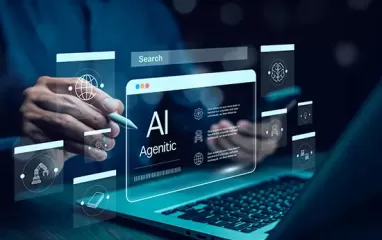Other recent blogs



Let's talk
Reach out, we'd love to hear from you!
Introduction
Who could have thought that Large Language Models (LLMs) would reach this far where they can identify and generate human-like text at scale? And this is just one of the many things they can do.
They can produce plausible text in response to a prompt, help developers write neat and maintainable code, translate languages, and summarize text.
Now, LLMs are finding another use case: Their integration into enterprise applications.
Enterprise LLM applications are key to increased agility, accelerated processes, and outstanding team collaborations. The benefits are many. However, integrating LLMs into enterprise applications can be tricky and resource-intensive.
Product teams and engineers must be aware of the challenges of LLM implementation to navigate them successfully.
However, before we discuss the challenges, let’s just refresh our memory on the basics of LLMs:
What are large language models (LLMs)?

Large language models, or LLMs, are AI models developed and refined with large amounts of data. Sources for such massive amounts of data could include the Internet, books, articles, etc.
Based on the quality and quantity of the data, these models become increasingly proficient in understanding and generating natural language.
When they reach a mature state, they can be used by businesses and the general public for a wide range of applications, such as generating text at scale using prompts and summarizing reports.
You can easily access LLMs' phenomenal features and capabilities using interfaces like Open AI’s Chat GPT-3 and GPT-4. Meta’s Llama models and Google’s bidirectional encoder representations from transformers (BERT/RoBERTa) and PaLM models represent other interfaces or tools that let you experience the power of LLMs in real-time.
Why do companies integrate large language models (LLMs)?
Forward-looking organizations are increasingly investing in LLM products for numerous reasons.
First, it is more of a new entrant in the technology landscape. Like any other latest phenomenon, LLMs are gaining significant attention across industries.
Enterprises working with commercial clients are finding LLMs a more strategic asset to have and build on, as these trained AI models promise a new age of automation and productivity for companies.
An increasing number of companies—of all shapes and sizes—seem to find value in LLMs and use them to accelerate their internal and external processes. The adoption and integration rate will most likely skyrocket among business users in the years to come.
Integrating LLMs into enterprise applications can improve the natural language processing capabilities of the business, elevate the customer experience, increase automation, and improve decision-making across the organization. Some potential benefits of LLMs can include:
1. A strategic win on the NLP front
It is no surprise that embedding LLM intelligence deep within enterprise apps can make them more effective for users across the organization. LLMs can help enterprises improve their connections with their customers, sentiment analysis, and tasks such as language translation and text summarization. Overall, the organization's NLP or natural language processing capabilities increase dramatically.
2. Shift teams to more productive tasks
LLMs-powered systems can handle many routine tasks, such as responding to customer queries and generating reports and insights. By introducing this automation, leaders can help their people become more productive by contributing to more meaningful projects and tasks.
3. Deliver the ‘much needed’ experience
LLMs are unmatched at consuming data and generating insights that can be a ‘gold mine of knowledge’ for organizations with plans to keep customers engaged and revenue soaring. With enterprise LLM applications, department heads can access data and insights to understand their customers better and build their strategies and campaigns.
However, LLMs do not come without their sets of challenges. To embrace them, businesses must be aware of these challenges and proactively build a roadmap to overcome them. Here are a few of the challenges that can derail your team’s progress:
Main challenges of integrating LLMs into applications
1. Ensuring accuracy
Ensuring that your LLMs generate accurate and reliable output that can help drive business forward is vital. Hallucinations are a real problem when you develop LLMs and integrate them into the backend of your applications. Inaccuracies in the generated output can lead to misinformation, affecting decision-making and business revenue.
2. Ensuring safety
Embedding AI intelligence deep into your applications and systems requires robust governance to ensure the generated outputs - a report, a summary, ideas, or other forms of content - do not cause troubles - even legal and compliance-related - and pose risks to the business users.
3. Ensuring LLMs are in sync with enterprise needs
Another key challenge that most first-time businesses face while implementing LLMs into their enterprise applications is ensuring that the AI models or LLMs understand the specific context of the enterprise, which means gaining deeper visibility and understanding of its unique data, processes, and requirements. Moreover, the LLMs also need to generate the content or required output that matches the company's tone.
4. Ensuring the generated output is useable
Another major challenges with LLMs is ensuring that the output they come up with is up to date. If the generated outcome is outdated, it can lead to inefficiencies in decision-making and raise customer service issues. Especially when dealing with old terms of services which can make you and your company accountable for outdated answers.
5. Ensuring cost-efficiency
Developing and maintaining LLMs is a costly affair and might not be sustainble for most organizations. The cost related to data collection, storage, and computation resources required for these AI models can be substantial.
Tips to overcome these challenges
1. Start with a clear strategy
Think about the core advantages you expect from such a massive initiative. Try to answer questions like: 1. What areas will likely see improvement? 2. Are the gains worth the investments? 3. What kind of expertise do you possess in-house? 4. Would you consider outsourcing the project? Confronting some core questions can help you undercover the best solutions.
2. Speak with experts
Contact a few reputed technology consultants, particularly those who have worked extensively with LLMs and GenAI. Tell them your expectations and timelines, if there are any. Seeking expert advice can help you avoid numerous mistakes that first-timers often face and embark on a more guided and seamless journey.
3. Follow an incremental and iterative approach
Break down the project into multiple doable phases that can be improved later. You can start with a minimum viable product (MVP) to see the thing in action and gather feedback. The next step would be to work on customer input and further build up the product's capabilities. In time, the LLM capabilities can be scaled across the organization to drive real change and output.
Final takeaway
Adopting large language models (LLMs) is no longer an innovative option. Instead, it is something that businesses will increasingly need to stay relevant, competitive, and profitable.
Of course, there are many challenges surrounding the adoption and usage of LLMs. However, the potential benefits of embedding this technology far outweigh the effort and cost associated with dealing with these challenges. Therefore, the organizations ready to navigate these challenges will surely set themselves up for long-term success.
For more information on how these AI models can help you drive your business forward, please connect with Team Kellton.



